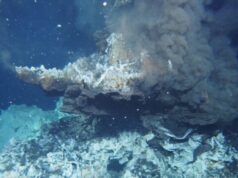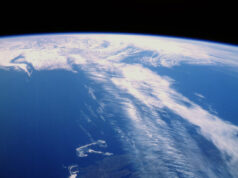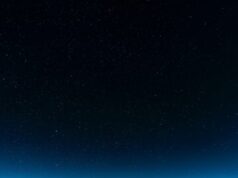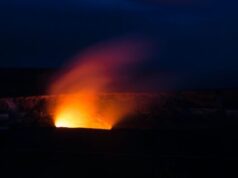Mount Cook, the highest peak of New Zealand and Zealandia. Image credit: Flickr/Bernard Spragg. NZ
The science and information magazine of The Geological Society of America, GSA Today, now posts science and Groundwork articles ahead of print as well as publishing double issues where possible. This includes two articles slated for the March-April 2017 print issue: “Quaternary Rupture of a Crustal Fault Beneath Victoria, British Columbia, Canada,” by K.D. Morell and colleagues, and “Zealandia: Earth’s Hidden Continent,” by N. Mortimer and colleagues. Both articles are highlighted below:
Seismicity in the Pacific Northwest is well documented and includes recent seismic activity on fault systems within the Juan de Fuca Strait. However, the seismic potential of crustal faults within the forearc of the northern Cascadia subduction zone in British Columbia has remained elusive.
This article by Kristin Morell, Christine Regalla, Lucinda J. Leonard, and Vic Levson presents evidence for earthquake surface ruptures along the Leech River fault, a prominent crustal fault near Victoria, British Columbia. The authors use LiDAR and field data to identify linear scarps, sags, and swales that cut across both bedrock and Quaternary deposits along the Leech River fault. Displacement data indicate that the Leech River fault has experienced at least two surface-rupturing earthquakes since deglaciation following the last glacial maximum ca. 15 ka. The history of multiple Quaternary ruptures along the Leech River fault zone suggests that it is capable of producing earthquakes of MW >6. This active fault zone lies within tens of kilometers of downtown Victoria, British Columbia, Canada, and is in close proximity to three local water dams. Thus, the author’s identification of a significant shallow seismic source has considerable implications for the seismic risk exposure of this populated region.
Most of us view the continents and oceans as discrete entities of land and water across Earth’s surface. However, even a cursory look at our world establishes the problem. Are North America and South America truly separate continents with their connection through the Isthmus of Panama? Where and why does one distinguish Europe, Africa, and Asia considering the Bosphorus and Sinai Peninsula? One might suggest a geological reason: Continents are large, identifiable areas underlain by continental crust.
The article by Nick Mortimer, Hamish J. Campbell, Andy J. Tulloch, Peter R. King, Vaughan M. Stagpoole, Ray A. Wood, Mark S. Rattenbury, Rupert Sutherland, Chris J. Adams, Julien Collot, and Maria Seton follows this idea, but then throws a fascinating twist on the subject: Zealandia. One only needs to look at a bathymetric map, where ocean water is removed, to appreciate the issue. Several islands, notably New Zealand and New Caledonia, are connected by submerged continental crust across a large area of Earth’s surface. This mostly underwater continent is geologically separate and distinct from Australia and Antarctica, and as highlighted by Mortimer and colleagues, should be treated as such. Basically, from a well-reasoned geoscience perspective, Earth has well-established continents, but also an extra one, mostly underwater.
Find your dream job in the space industry. Check our Space Job Board »
Source: Geological Society of America
Research References:
- Kristin D. Morell, Christine Regalla, Lucinda J. Leonard, Colin Amos, Vic Levson. Quaternary Rupture of a Crustal Fault beneath Victoria, British Columbia, Canada. GSA Today, 2017; DOI: 10.1130/GSATG291A.1
- Nick Mortimer, Hamish J. Campbell, Andy J. Tulloch, Peter R. King, Vaughan M. Stagpoole, Ray A. Wood, Mark S. Rattenbury, Rupert Sutherland, Chris J. Adams, Julien Collot, Maria Seton. Zealandia: Earth’s Hidden Continent. GSA Today, 2017; DOI: 10.1130/GSATG321A.1











